1953 – G.E. "O-Man" Manipulator
Source: Popular Science, March 1964.
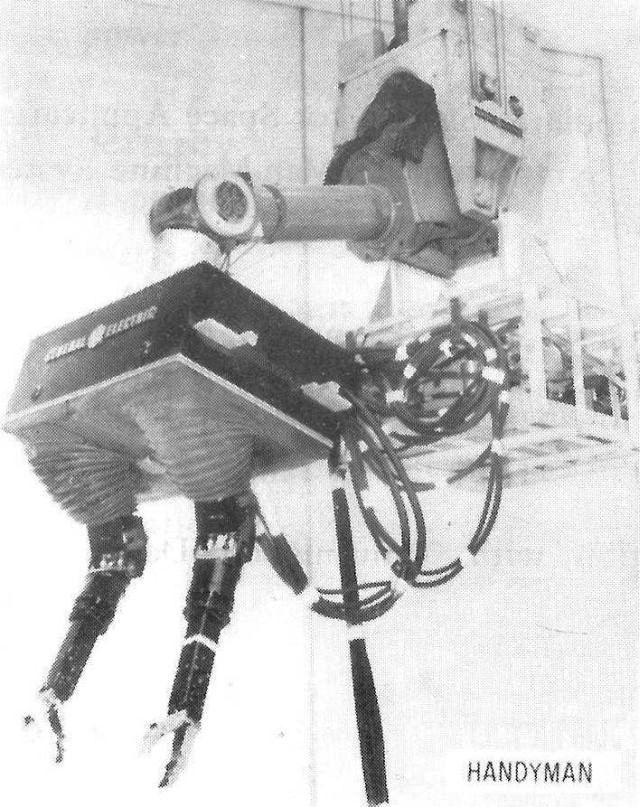
G.E,'s Handyman is seen here mounted under an O-Man.
Source: Meccano Magazine, February 1963.
Perhaps the world's most powerful mechanical arm was developed several years ago in America. Named "O-Man" (for Overhead-MANipulator), this 15-ton remote-controlled giant makes possible the assembly or dismantling of large machinery by the twist of a knob or the flick of a lever. This mechanical "Tarzan" was built as the answer to the need for a device with several times the lifting power of existing mechanical arms, yet with equal verstility.
By comparison, if a man were as strong as "O-Man" he would be able to carry 5,000 Lb. on his back, lift 3,000 lb. from the floor, hold 1,000 lb. with his arm extended horizontally, or lift and manipulate a piano with is forearm and wrist.
"O-Man's" chief job is to pick up heavy parts, position them and fasten them into place. It can drill and tap holes, use power wrenches, hammers, or riveters, and if need be, can handle a sheet metal saw.
While its grip lacks the flexibility of human fingers, it otherwise posesses the same degree of motion as the human hand and arm, plus the ability to telescope its "forearm" and revolve its wrist.
In a special test, it twisted an iron bar into a corkscrew then tied it into a neat knot. Yet, although not intended for delicate tasks, "O-Man", with its twin steel fingers, can whip up, slice, and serve a cake or pick up and pour a glass of water, so refined can its touch be made.
Resembling a gun turret, the big device operates from a crane bridge, its vertical manoeuvrability ranging from floor level to the height of the crane bridge. Power control is supplied by means of 140 separate wires in multi-festooned cable. The heart of the control mechanism is a system of 8 amplidynes–devices that provide automatic control giving smooth operation and limiting all motions to prevent damage to equipment.
General Mills later made the O-Man called Model 700 Manipulator.
Other GE Manipulators (not CAMS):
See other early Teleoperators and Industrial Robots here.
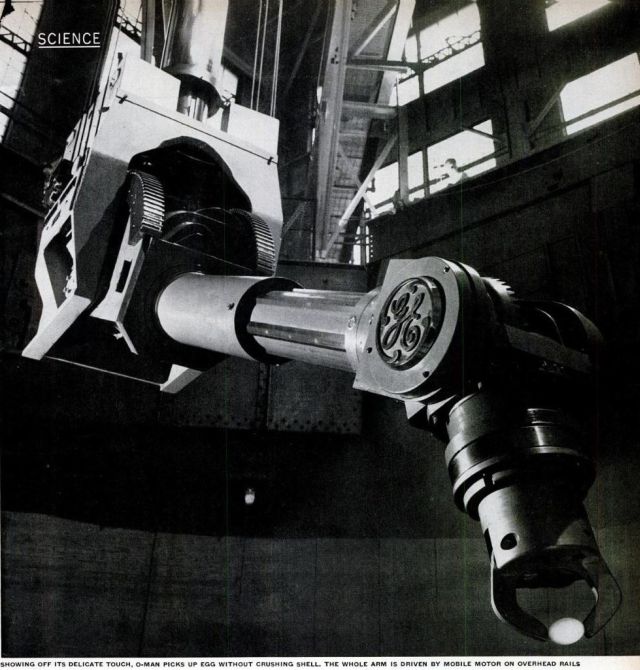
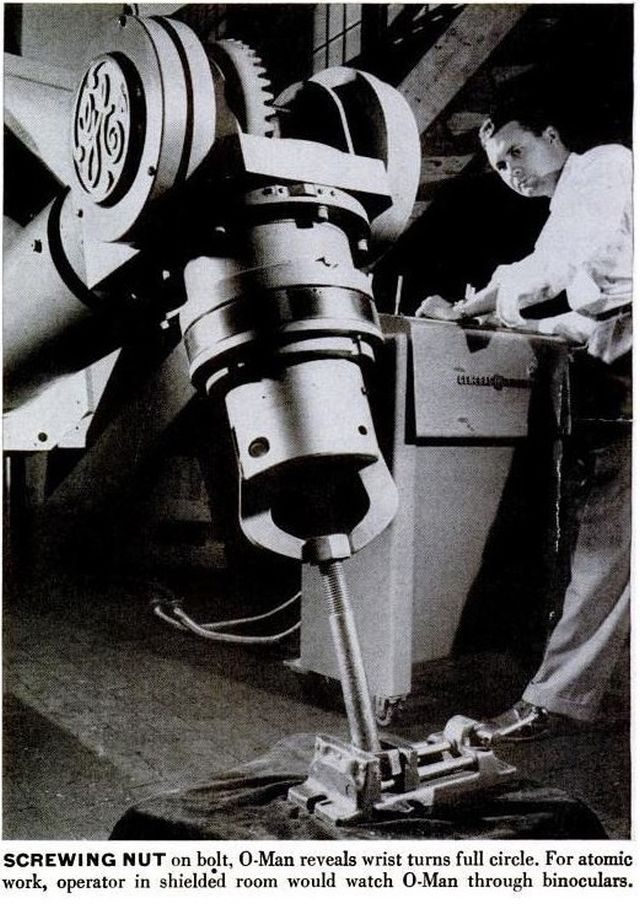
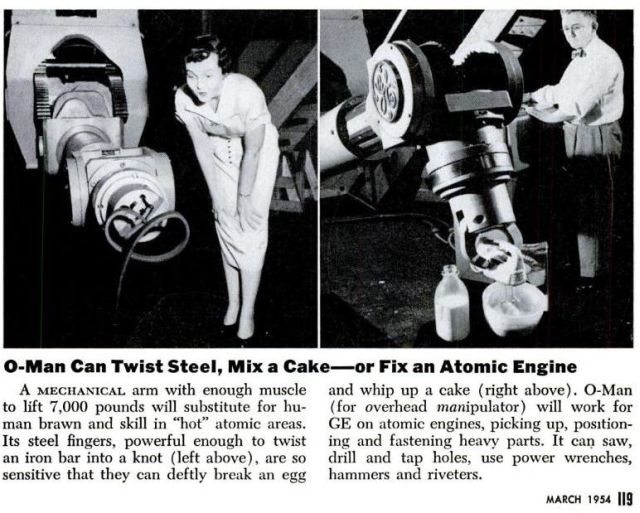
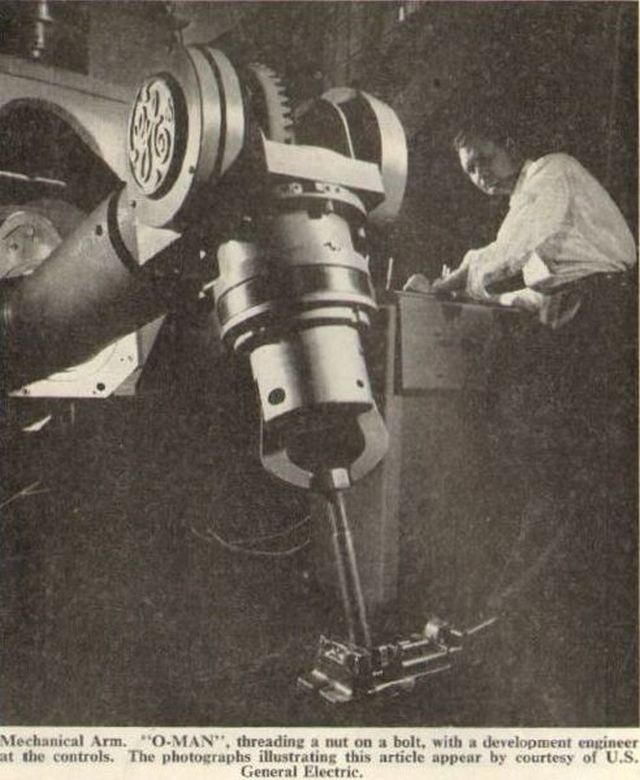
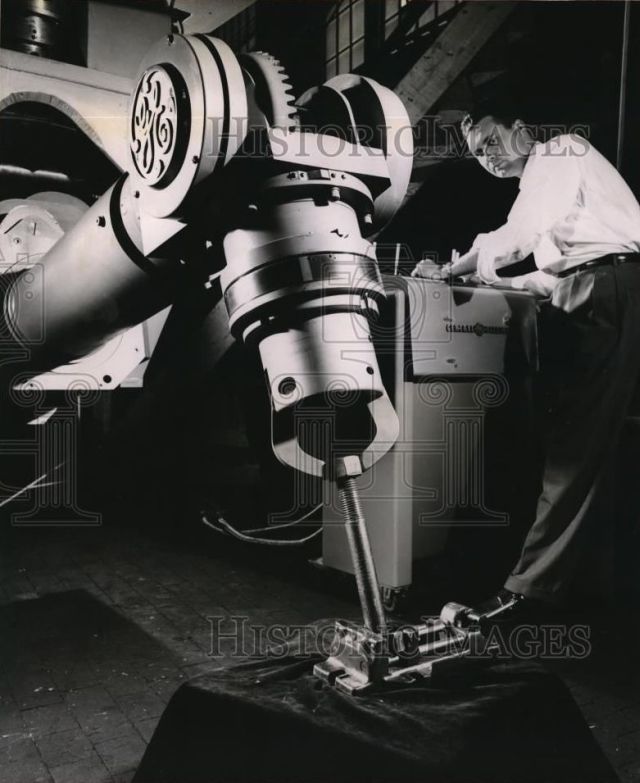
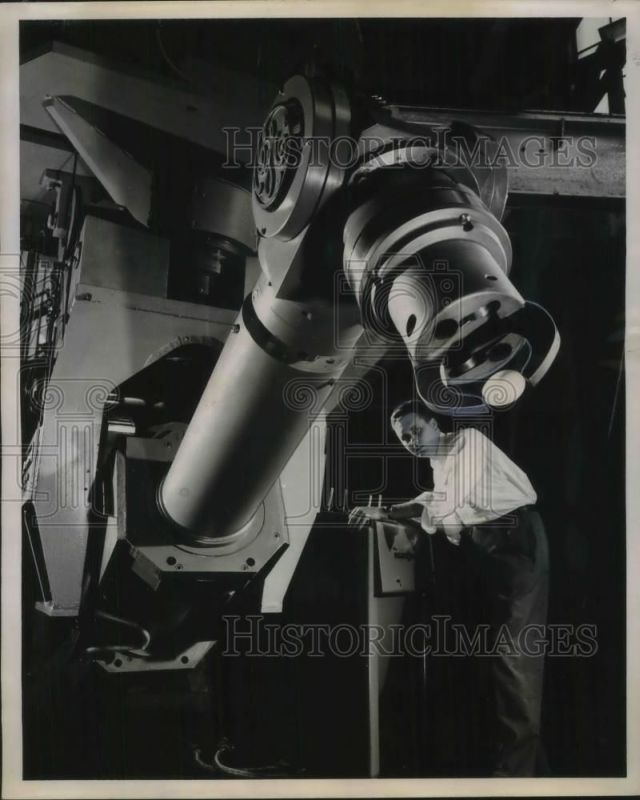
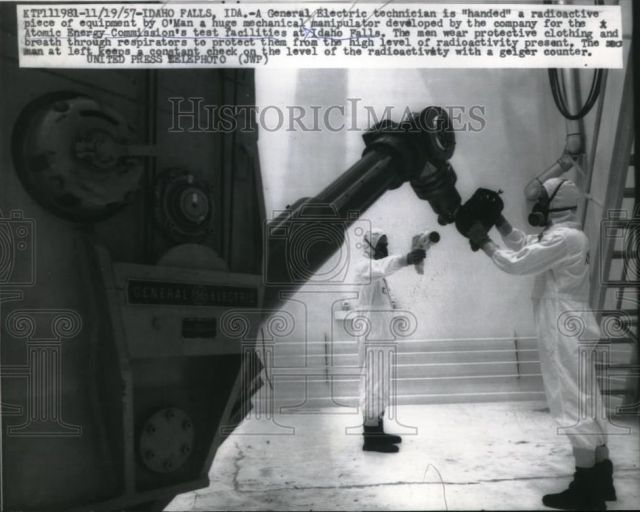
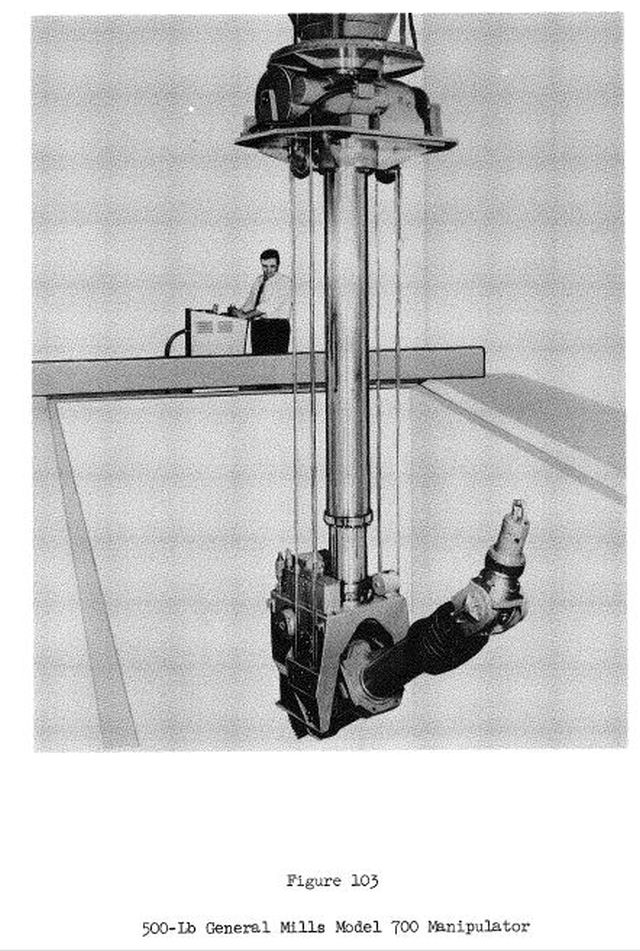
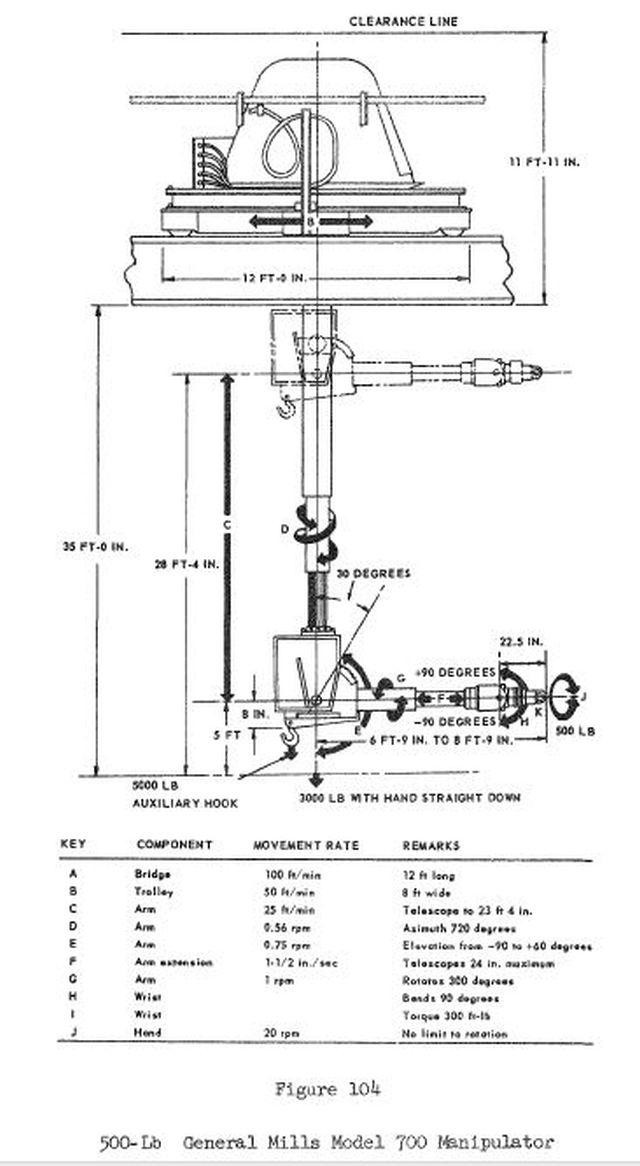
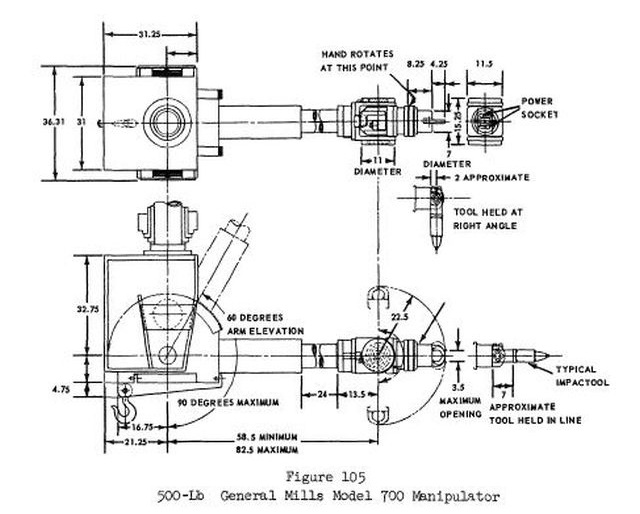
 1950 – GE Manipulator – Manual or remote control
1950 – GE Manipulator – Manual or remote control